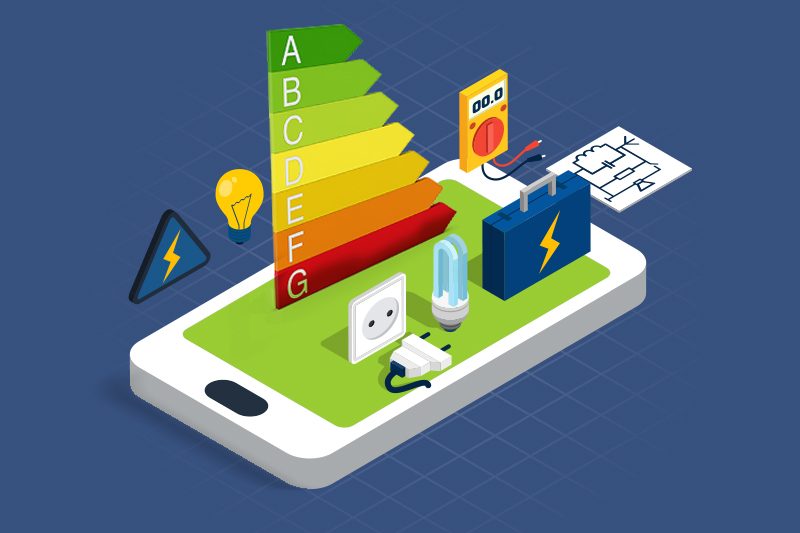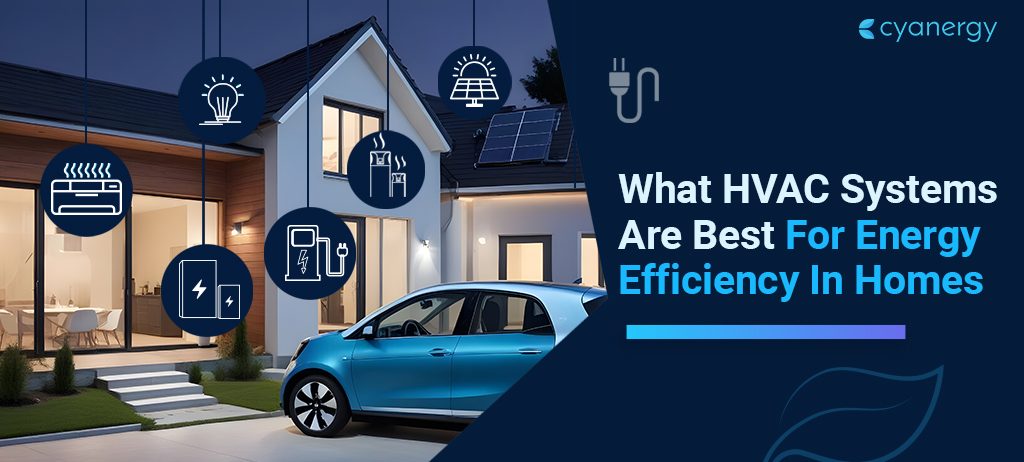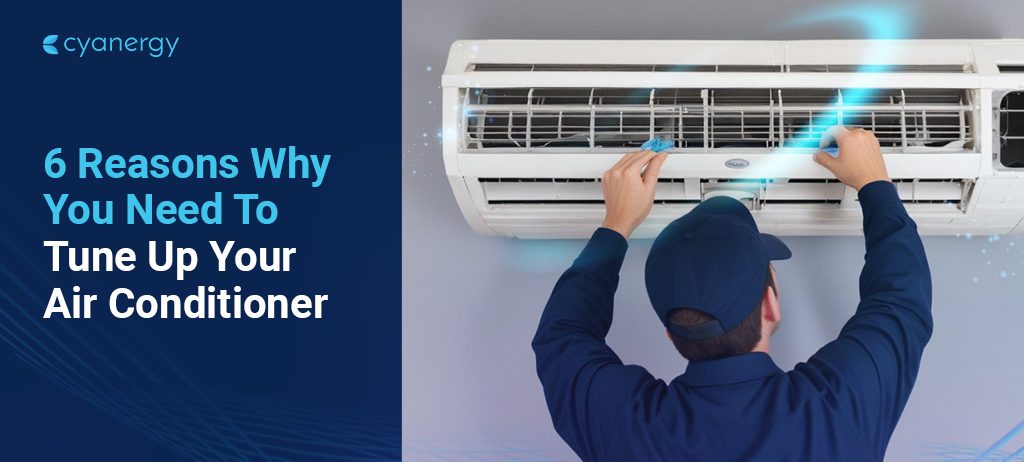Energy savings involve lower bills and increased energy efficiency. To optimize your home, you must first understand its efficiency.
This comprehensive guide will explain how to conduct a home energy audit, including what to look for, what equipment is required, and what professional services are available.
An energy audit can help you improve the efficiency of your home. You’ll identify which appliances to upgrade, save money on your energy bills, and make your home more comfortable to live in.
Here are some suggestions to get you started.
What's a Home Energy Audit?
A home energy audit is a thorough check-up of your home’s energy use. It shows you where you can fix things to use less energy and spend less money.
It means examining different parts of your house, such as the stuff that keeps it warm and your devices, to see how well they use energy.
Getting ready for the audit: Before you start the audit, collect your old energy bills to see how much energy you usually use. This will help you see how much better you do after making changes.
Learn About Your Energy Usage
Check how much energy your home uses in kilowatts per hour and compare it to other homes around you.
If your bill shows you’re using a lot more energy than what’s typical for your area, especially by more than 10 kWh every day, it means you should really look into how your home uses energy. You can see what’s typical for your area.
Find Out Devices That Use Most Energy
Some everyday items that use a lot of electricity are outdated fridges, pool pumps, and heat pumps.
If you don’t have an energy meter to show your energy use, try switching off everything but the one device you’re testing and watching your energy meter. If the meter spins quickly, that device uses a lot of energy.
You can also work out how much electricity something uses by taking its wattage (usually on the bottom of it), multiplying by how long you use it each day, and then dividing by 1000 to get daily KWh.
Then, see how much it costs you each day by multiplying by the price you pay for each kWh from your bill.
Replace Old Appliances With Energy Efficient Ones
That old extra fridge might be costing you a lot of energy. New devices might use less power, so even though they cost money, you’ll save on your energy bills later on.
Look for ones with the best Energy Star Ratings, but remember, different items are rated based on different things they do. You can figure out how much it might cost to run new appliances online.
Focus On LED Lighting
Change out old lights for LED lights that use less energy. Also, try not to use downlights, as they can let warm air escape from your room.
Instead of heating or cooling your whole house, choose systems that can change the temperature in just the room you’re using.
Focus On LED Lighting
Change out old lights for LED lights that use less energy. Also, try not to use downlights, as they can let warm air escape from your room.
Instead of heating or cooling your whole house, choose systems that can change the temperature in just the room you’re using.
Put in Good Insulation and Air Control
If your insulation isn’t excellent, you’ll have to run your heater or AC longer. Find out if you have the proper insulation for your area.
Look Out for Leaks:
The first thing you can fix in your house is drafts—like cracks where the floor meets the walls or where the walls meet the ceiling. Check outside, too, where different materials are put together in your house.
Remember to check your windows, doors, lights, pipes, switches, and power outlets for any gaps that let air through.

Test for Air Leaks:
To really know where air is escaping, use a particular test called a Blower Door Test. It tells you exactly where your house is not sealed right so you can fix those spots. Even though it’s not perfect, you can do a simple test yourself to find leaks:
- Wait for a chilly, breezy day.
- Turn off anything that burns fuel (like heaters or water heaters).
- Close all your windows, doors, and fireplace openings.
- Turn on fans that blow the air outside, or use a big fan to pull air out of your rooms.
- Light a stick that smokes and hold it near places where air might leak. If the smoke moves weirdly or gets blown or sucked in, you’ve got a draft. You can also use your wet hand to feel for cold drafts.
If you don’t want to turn off your fuel appliances, you can perform the test using your fans.
Other ways to find leaks:
- At night, shine a flashlight over possible cracks while someone looks from outside. Big cracks will show as light beams. This only works well for tiny gaps.
- Close a door or window on a strip of paper or money. If you can pull it out quickly, the air is probably leaking, and that’s wasting energy.
Heaters and Air Conditioners:
Check how old your heating and cooling system is. Older ones might not work as well, and they can leak air. Think about how you set your thermostat—more minor shifts are better for saving money.
Appliances:
Find out how old your big machines, such as your refrigerator and laundry machine, are and check how much power they have.
What are Some Energy-hungry Areas in Your Home?
-
Some common examples of energy-guzzling appliances that may be contributing to high electricity usage in a home are:
Old refrigerators: Older fridge models are often less energy-efficient than newer ones.
Clothes dryers: Tumble dryers, especially older models, use a significant amount of energy to dry clothes.
Air conditioners: Inefficient or old air conditioning units can consume a lot of energy, mainly when used frequently or for cooling large spaces.
Space heaters: Portable electric heaters can use a lot of power, mainly if they’re used as the primary heat source in a home.
Pool pumps: Pool pumps that circulate and filter water continuously can be significant energy consumers.
Water heaters: Traditional tank-based water heaters keep water hot 24/7, which can add to your electricity bill.
Ovens and stoves: Older electric ovens and stovetops can be inefficient and use a lot of energy during cooking.
It’s important to note that the actual energy consumption for each appliance will vary based on usage patterns, the model’s efficiency, and other factors.
Process of Individual Audits

Cooling
In Australia, using air conditioning takes up a considerable amount of our power bill—about 40%—so we have to stay cool wisely.
Step 1: Pick the right temperature: Is your aircon set to 25-27 degrees Celsius? If you go just 1 degree colder, you could use up to 5-10% more energy.
Remember, different territories have different weather conditions in different places. The Red Centre can swing from hot to cold, while the Tropical North has a rainy season and a dry season.
Depending on where you are, you might need to change how warm or cool you set your aircon, especially during winter.
Step 2: Clean out the dirt: Remember to clean your air conditioner’s filters regularly. This helps it run smoothly without having to work too hard.
Step 3: Fix any leaks: Leaks or blockages can make your air conditioner less efficient, and constant use can wear it out. When was the last time you had it checked? It’s good to have a professional look at it once a year to keep it in tip-top shape.
Step 4: Keep the heat out: To prevent too much heat from getting inside, consider getting curtains with a white lining that blocks light for your oversized windows.
Appliances
In some households, gadgets like fridges and washing machines can use up to 30% of all the energy the house needs.
Step 1: Keep track: Pay attention to which gadgets you use most often.
Step 2: Switch off: Look around. If you’re not using something, is it turned off at the wall? Get used to flipping the wall switch to off after you use something, rather than leaving it on all the time or in ‘standby’ mode.
Step 3: Dry in the sun: The Northern Territory’s sunshine is ideal for drying clothes. To save energy, hang laundry outside instead of tossing it in the dryer.
Step 4: Full loads only: Be smart about how you use your washing machine and dishwasher. Take your time running them when they’re not complete. Wait until you can fill them up to start a cycle. Doing fewer loads means using less energy and water.
Hot Water

Using a hot water heat pump uses up about 23% of your home’s energy, so it’s essential to think about that when you’re trying to use less energy.
Step 1: Hot Water Temperature: What temperature is your hot water at? It’s best to keep it between 60 °C and 65 °C.
Step 2: Short Showers: Try to take quicker showers to save water and the energy needed to heat it. Try to keep it under 4 minutes.
Step 3: Stop Leaks: If you have taps that drip, get them fixed.
Step 4: Old Water Heaters: If your water heater is old, think about getting a new one, like one powered by solar energy or one with a 5-star energy rating.
Step 5: Efficient Shower heads: Swap your shower head for one with a 3-star rating or higher.
Refrigeration
When the weather’s warm, some appliances, especially fridges, have to work extra hard and end up using more electricity.
Step 1: Seals Check: Check the seals on your fridge to keep the cold in and the heat out. TIP: Close the fridge door on a piece of paper. If the paper slides out quickly, you might need new seals.
Step 2: Right Temperature: Set your fridge temperature between 3 °C and 5 °C.
Step 3: Space for Air: Make sure there’s room behind your fridge so air can move around.
Step 4: Second Fridge: Think about how often you use your second fridge. If it’s not frequent, you might not need it.
Lighting
Lighting your home accounts for approximately 6% of your total energy usage. Turning on lights and then forgetting to turn them off can cost you money.
Step 1: Replace traditional light bulbs with fluorescent or LED lights.
Step 2: Work with a licensed electrician to remove any unnecessary light fittings around your home.
Step 3: Use sensors and timers, particularly for outdoor lighting.
For a better energy audit, contact Cyanergy or talk to an expert!







